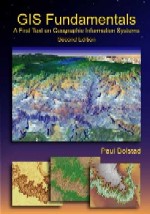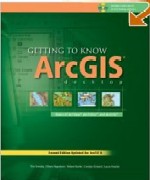 INTRODUCTION
INTRODUCTIONSpatial data entry and editing can be the most expensive, time consuming and important of all GIS operations. Take the time and care to do this part well because the data is the foundation for everything you will do with your GIS.
LEARNING OBJECTIVES
- Discuss hard copy and digital forms of spatial data
- Describe how spatial data are commonly entered to the computer
- Describe several different types of maps
- Discuss small scale versus large scale
- Why are data generalized and what are some typical ways these generalizations occur?
- Describe the digitizing: coordinate capture process
- Describe coordinate surveying
- Discuss metadata and it's importance to GIS
Lecture - GIS Fundamentals
- hard copy
- digital
- cartometric
- insets
- map scale
- graticule
- grids
- feature maps
- choropleth maps
- dot-density maps
- isopleth maps (contour maps)
- large scale
- small scale
- map generalization
- feature generalization
- simplified
- omitted
- fused
- displaced
- exaggerated
- registration
- digitizing
- manual digitizing
- on-screen digitizing (heads-up)
- hardcopy digitizing
- minimum distance
- undershoots / overshoots
- node / line snapping
- snap tolerance / snap distance
- spline
- scan digitizing
- editing
- rubbersheeting
- coordinate surveying
- coordinate geometry
- bearings
- coordinate transformation
- control points
- resampling
- metadata
Lab - Getting to Know ArcGIS
- editor toolbar
- sketch tool
- edit task
- target layer
- snapping environment
- auto complete polygon
- map topology
GIS Fundamentals - Chapter 4 - Data Sources and Data Entry - Get the PowerPoint supplement here
ASSIGNMENTS (ACTIVE LEARING EXERCISES)
Getting to Know ArcGIS : Chapter 15 - Creating Features
Getting to Know ArcGIS : Chapter 16 - Editing Features and Attributes
*** Check the errata for the book on these chapters. There are updates.
SUPPLEMENTAL RESOURCES
Check out these data sources ...



No comments:
Post a Comment